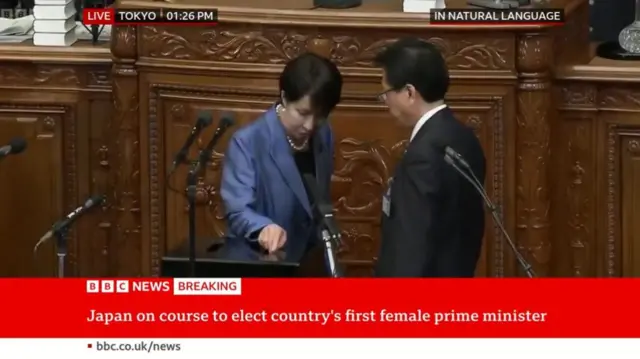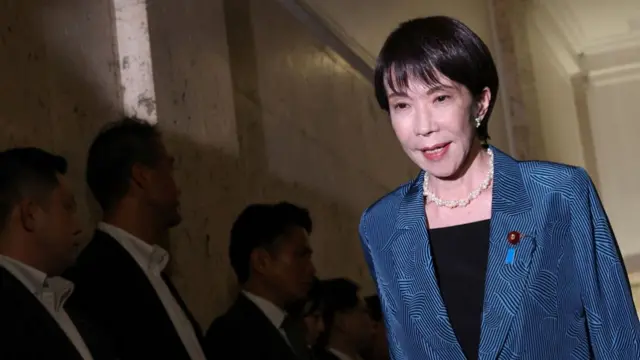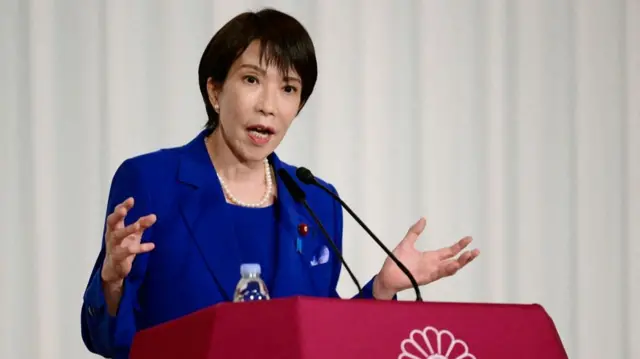A historic moment for womenpublished at 05:54 BST 21 October
 Shaimaa Khalil
Shaimaa Khalil
Tokyo correspondent
This is a historic moment - the first time Japan has put a woman in the top job.
Many observers told me that part of the reason for the right wing leader's ascension is the governing party wanting to appeal to its conservative base, some of whom had switched to the more right-wing Sanseito party after it made significant gains in the recent upper house elections.








